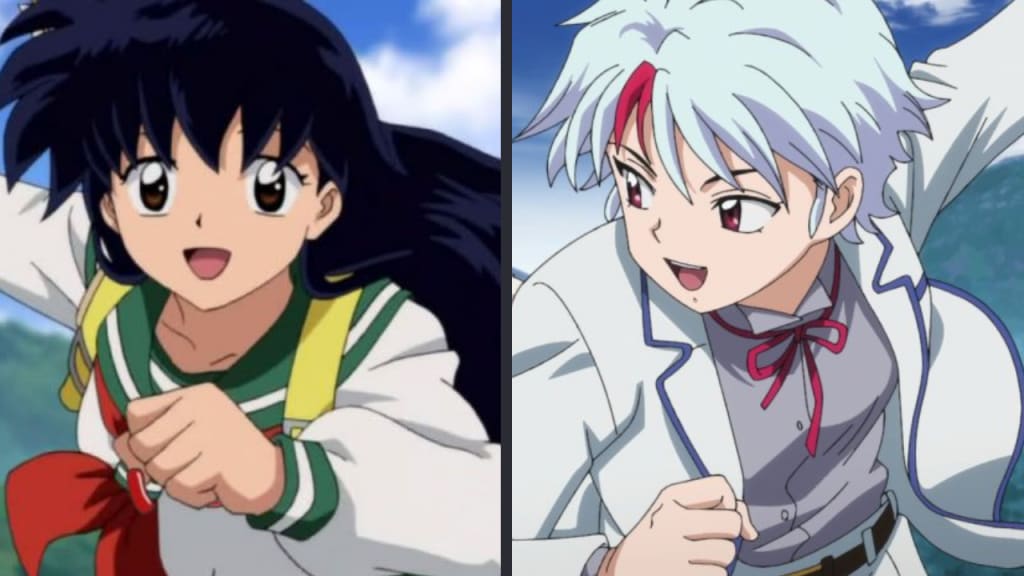
Introduction: Character Design
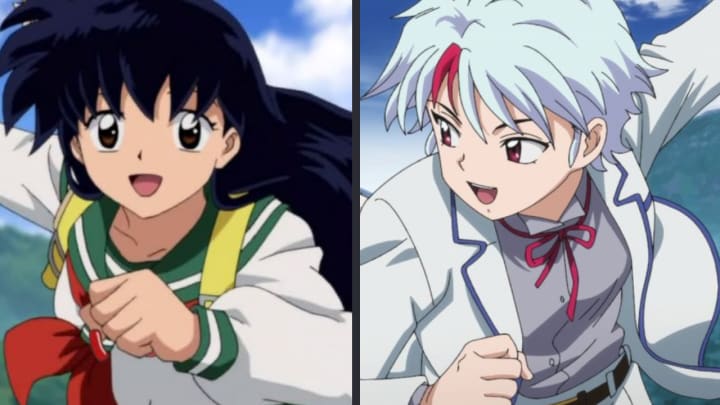
Judging from each heroine's apparel alone, any spectator can tell that Towa's design can be largely inspired by the progressive themes of 2020. Compared to Kagome's iconic sailor uniform, short skirt, and luscious black hair, Towa sports a clean white boys' school uniform with fitting trousers, an assertive belt, and a thin red ribbon. Towa's pale short hair contrasts Kagome's dark locks. Their skin tones even differ as Kagome's emits a tanned warmth while Towa's elicits an iciness inherited from her father.
Though the two young women seemingly embody contradicting features, their attitudes, personalities, and incentives argue far from that. It's not as if Kagome has never worn pants, nor that Towa is allergic to skirts. Yashahime establishes that Towa primarily wears men's clothing because of its convenience in combat. Likewise, we've seen Towa in "girlier" attire before too.

Towa wears her hair short, insists on fashioning sleek trousers, and gets into fights, but this doesn't make her any less feminine than Kagome. Towa's warmth mirrors that of her mother, an inherently feminine trait. She wears her heart on her sleeves, similar to Kagome and Rin but in a slightly different way. Similarly, despite Kagome's delicate demeanour, she's far from fragile. In the first episode of the original InuYasha series, she's established to be quiet hot-headed, outspoken, and strong-minded — qualities that would seemingly contradict a dainty sailor uniformed gal.


The point here is that Towa's androgynous features don't automatically equate her to be butch, nor does Kagome's inherent docility translate to softness. The irony is that Towa is the one who's considered soft throughout the commentary of Moroha and Setsuna in Yashahime and Kagome is characterized as stubborn and commanding in InuYasha.

The reason why Towa's depiction of gender is so striking is because it's not particularly linear or black and white: it is truly all-encompassing, and to some degree, intersectional. She may appear to be a stereotypical "tomboy" (author's note: this term is outdated, but I'll use it to convey the sentiment for convenience sake), but her warm, idol-crazed, pink bracelet-wearing self can speak otherwise. Likewise, Kagome's countless fashionable short skirts, high ponytails, and praised femininity don't revoke her ability to assume dominance, dictate decision-making, or oppose those who get in her way. These Higurashi daughters challenge one-dimensional approaches to feminism and gender, while simultaneously strengthening their cause.
Unbridled Sexualization
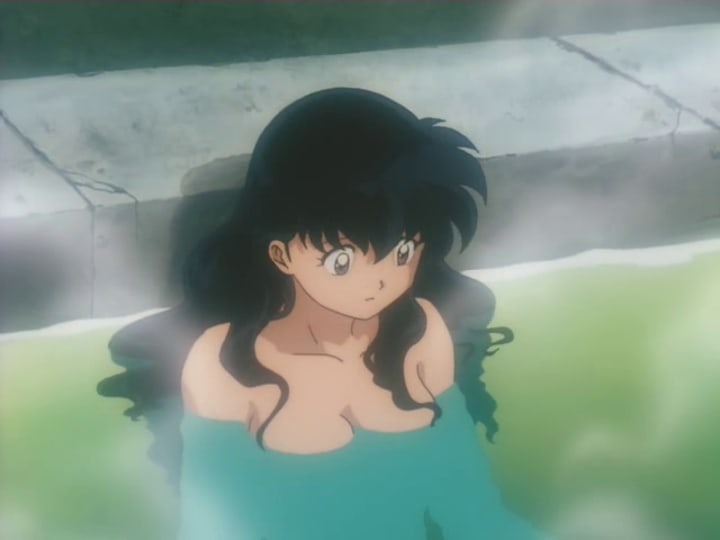

When the audience is formally introduced to our 14-year old heroine in Yashahime episode 2, Sunrise isn't shy to uphold that same raw sexuality they did for Kagome, a 15-year old at the beginning of the original series. There are enough debates on the morals and ethics of fictional depictions when it comes to sexualizing teenage girls, but it's also important not to ignore this aspect of female adolescence. Of course, their bodies are developing (some, quicker than others) and Sunrise's choice to make their newest protagonist equally as sexually appealing as their last one remains a consistent expressive choice, upholding the author's intent and style.

Sure, on the surface, Towa's considered the classic "tomboy," but that doesn't disqualify her from developing cleavage or wearing a bra. Kagome's raw sexuality is consistently played up in the original series, with characters commenting on her short skirt, countless hot springs episodes, and form-fitting outfits to top it all off. The best part of this is that this doesn't devalue either of these female icons. Sexuality isn't unnatural and the "fanservice" depicted in these times of provocation are some of the most tasteful executions in shonen anime. They're not at inappropriate times and they are intricately woven into the plot.
Modesty empowers some, nudity empowers others.
There's no right or wrong in these approaches. What's most meaningful about this is that the author is also a woman who recognizes the sophistication between the lines of these portrayals. Rumiko Takahashi subversively bolsters this message that women don't need to be afraid or shameful of their bodies through the delivery of two very different, yet similar heroines. She brings to life a story for both boys and girls.
Modern & Forward-thinking

Released in 2020, Yashahime isn't shy to explicitly express its messaging behind gender and feminism. Towa consistently makes references to the norms of the modern era and observes how innately backwards they are. In episode 12, her passionate line, "No matter what era you live in, what girls feel will never change," indiscreetly stands out from the rest of the episode's narrative.

During the original series, the easter eggs of feminism weren't nearly as explicit, but they certainly painted and complemented core aspects of the story. The notion of Kagome's choice and agency throughout InuYasha is hinted at consistently. Kagome, a woman of the modern era, remarks on some temporal differences with feudal Japan. In episode 41, when Miroku is re-acquainted with Koharu, someone he had proposed to at a young age, Kagome monologues internally, "Girls of the feudal era are amazing," as their foreign relationship structure unfolds in front of her.

Though some may view Kagome's response to Koharu's "unhealthy" and "brainwashed" or "conditioned" love for Miroku as poor writing, or blame it on Kagome's adolescent ignorance, I find that hard to believe. The compelling aspects of Kagome's feminism aren't that she'd outright denounce the sexist mechanisms of the feudal era or explain to everyone why what Miroku did was wrong (applying a modern approach, though it's evident that the entire gang looked down on Miroku for his age-inappropriate lechery anyway). Kagome's feminist approach is her belief in the agency and free will of the woman, Koharu. She never berates Koharu for these feelings, belittles her wishful thinking, or tries to force some type of moral superiority over her. Kagome never invalidates Koharu. And this is the critical point of her complementary feminism to Towa. Towa verbalizes the feelings of girls never change regardless of the time period. When I heard this line, I painted an instant connection with an homage to the original series' depictions of a "first love" and the ongoing conflicting feelings of the women in the InuYasha franchise. The concept of a "first love" transcends through time and Kagome's validation for Koharu complements Towa's statement and vice versa. Kagome and Towa aren't the only ones who demonstrate conflicting internal feelings — Sango, Kikyo, Kagura, Rin, Kagome's mother... they all have their moments of internal conflict about their own life choices.
How they Handle Bullies


When Koga first kidnapped Kagome in episode 36, Kagome did not indicate a shred of fear. In fact, upon witnessing Koga's initial dismissive and bully-like tendencies, she boldly slaps him. In Towa's introduction, it's immediately established that Towa also doesn't tolerate bullies. Neither of these young women is afraid to speak up or oppose the conformity of the structures that uphold bullies and they break the stereotype of feminine docility by actually engaging in violence when deemed necessary. These scenes, though seemingly minor, contribute to the growing similarities of Kagome and Towa in significant ways.
What Makes a Prince and a Princess
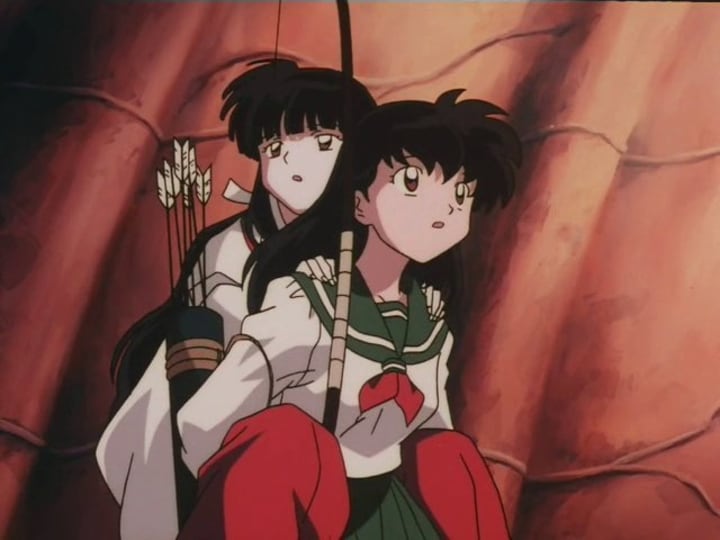
Despite what some may remember throughout the original series and most recently in Yashahime as Towa saves the day on numerous occasions, Kagome's character isn't written into the stereotypical female-cornered trope of a "damsel in distress." There have obviously been countless times where InuYasha verbalizes his need to "save Kagome," but that doesn't mean she never has the chance to be "the prince." Kagome saves her friends on multiple occasions, rescues Kikyo twice, and deduces the correct wish to exterminate the Shikon Jewel. Despite the many points of "distress," Kagome's character isn't unfamiliar with being on the other side — being the prince who saves the day — a quality that has been historically unfeminine.

On the other side of the spectrum, the writers also don't reduce Towa down to just a prince either. On some occasions, she is the titular "Half-Demon Princess" beyond lineage. She may be overpowered in some aspects (author's note: discounting episode 18 where she unsuccessfully battles Kirinmaru), but that doesn't mean she's always written to save the day and become some type of heroic Mary Sue. There are growing moments where Towa needs a prince to save her, the princess. And by "prince," this isn't limited to a male saviour, but just someone who embodies "princely" traits of rescue, charm, and concern for the princess. In many cases throughout Yashahime, Towa's cousin, Moroha and sister, Setsuna end up assuming these roles. They are, by comparison, optically much more "girly" than their white-haired counterpart. But their long dark hair and feminine attire don't disqualify them from being a prince. Nor does Towa's "tomboyish" tendencies invalidate her as a princess.
Conclusion: Nonconformity


It might be overlooked, but Towa's disdain for female school uniforms and subsequent nonconformity to wear them isn't the franchise's first depiction of fashionable nonconformity. This honour could be allocated to Kagome. In the first ten episodes of InuYasha, Kagome sports various chic outfits with her signature skirts of the late 90s. And throughout the entire series, random villagers, opposing demons, and even members of her own entourage have moments where they question her apparel. Logically, Kagome comes from a time period infinitely more advanced than InuYasha's world. She could wear Adidas track pants or Nike joggers to her feudal adventures but Kagome consistently sports her school uniform — not necessarily to show off her gorgeous legs or uphold some obscure sense of school spirit. The simplest rationale can be that it's what makes her feel comfortable. And Kagome's comfort in her school uniform is no less valuable nor any less valid than Towa's comfort and preference to don a boy's school uniform.


InuYasha and Yashahime are smart to subversively show and not tell these aspects of their respective heroines. Their motivations or rationales don't need to be verbalized in order to be understood or validated: they're tenderly woven into each of these young women's directions.
The significance behind Towa and Kagome's character designs speak volumes beyond a simple stroke of a pen or mixture of colour composition. They convey messages of nonconformity, progressive-thinking, righteousness and justice, and choice-driven preference. These protagonists embody the importance of 21st-century agency in women and heighten the multidimensional intricacies of gender, its norms, and what it means to be "feminine."
References
InuYasha
- Episode 1
- Episode 2
- Episode 31
- Episode 36
- Episode 41
- Episode 58
- Episode 98
Hanyo no Yashahime / Princess Half-Demon
- Episode 2
- Episode 7
- Episode 12
About the Creator
bakasaiga
she/her
Thanks for reading!

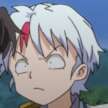




Comments
There are no comments for this story
Be the first to respond and start the conversation.